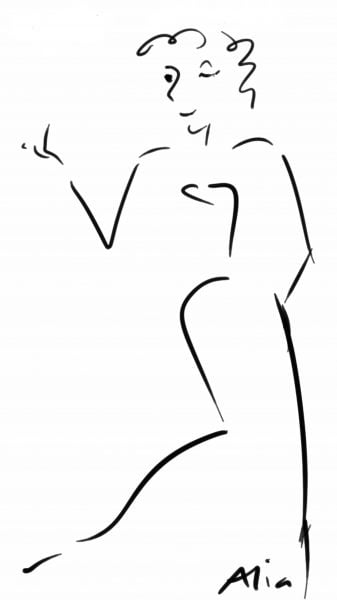How can slow movement improve technique?
When we whip through a move or combination at speed, when we do it the easy way, we limit our progress. We might cut corners, or miss small errors, particularly in areas that are difficult or in the outer fringes of our physical abilities. The circle isn’t really circular; the curve has a divot in that area where our hip has a little hitch. The little hunch in our shoulders, the glitch in our balance as we turn goes unnoticed.
Slow movement, movement at a speed Dunya describes as “glacial,” allows us to deeply inhabit every moment of the shape we create. We engage and focus our attention at each moment, feel intimately each tiny increment. Where we might skimp at normal speed, we can anticipate hitches, see them coming, and adjust our trajectory, slowing down even further, so we slip unobstructed through the straits.
When we go slowly enough, we are less likely to trigger pain, so we can complete the arc more graciously. When we find a trouble spot, we can hold it like a pose, motionless, while our bodies sort out balance, line, reaching like flowers for the light of openness and effortless lilt.
We also build myelin, the neural manifestation of skill. Myelin (skill) is an insulating substance that wraps neural circuits and grows according to certain signals (Coyle). And one of those signals is slowing things down. We learn faster and improve more quickly by slowing down. Myelin reinforces the neural pathways that we use—the definition of skills development. So whatever we do, that’s what gets reinforced. If we skimp, that’s what gets reinforced. If we make beautiful, elegant arcs, that’s what gets reinforced.
Breaking things into small chunks and practicing them out of sequence also builds myelin. Taking small, disconnected chunks of technique, feeling them deeply, inhabiting them, slowing them down, making them into a series of elegant poses, that reinforces those neural pathways. Doing the power poses regularly reinforces those neural pathways. And we need those certain signals. Doing things mindlessly doesn’t get us there. We need to be in the sweet spot at the edge of our abilities.
The brilliant thing about this practice is that we are always at the edges of our ability. We are always searching, discovering, intent, focused, spreading our feelers out from every inch of our consciousness. So don’t worry if this is hard. Hard means you are learning. It means you are building myelin. We focus now so we can let go later. We build skills now so that on stage, they will be there for us. Through effort, we attain effortlessness.
Love,
Alia



No comment yet, add your voice below!